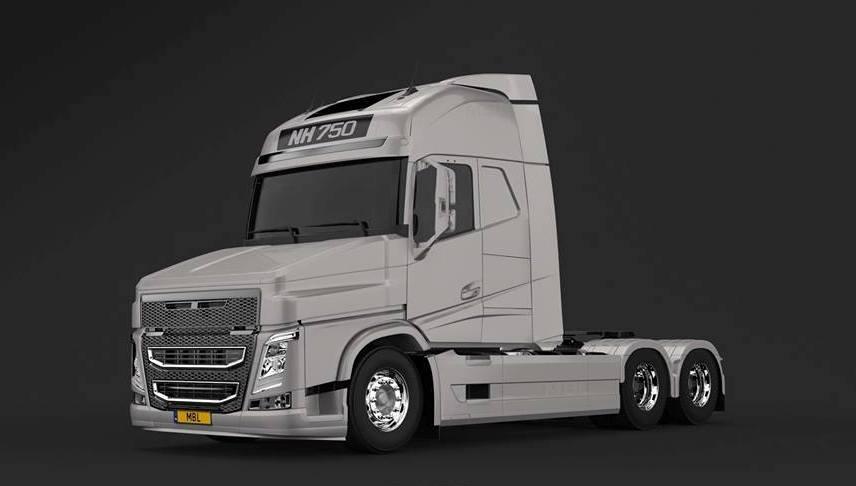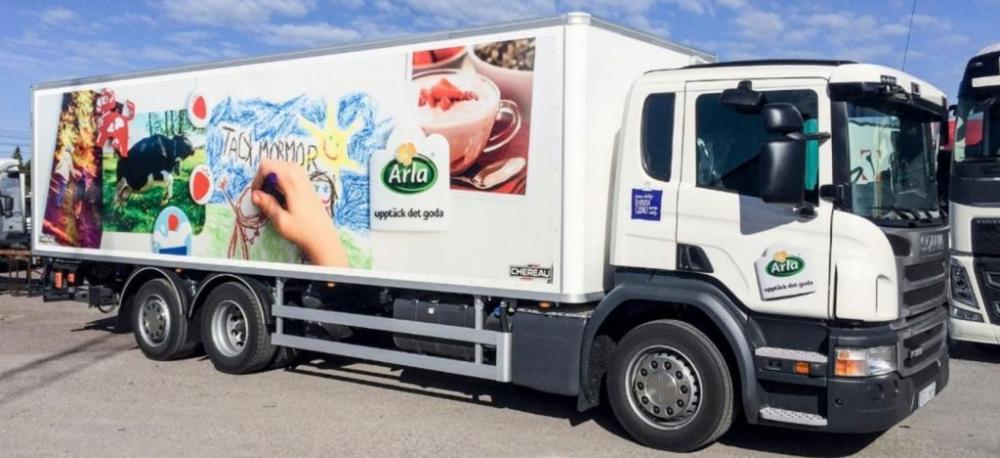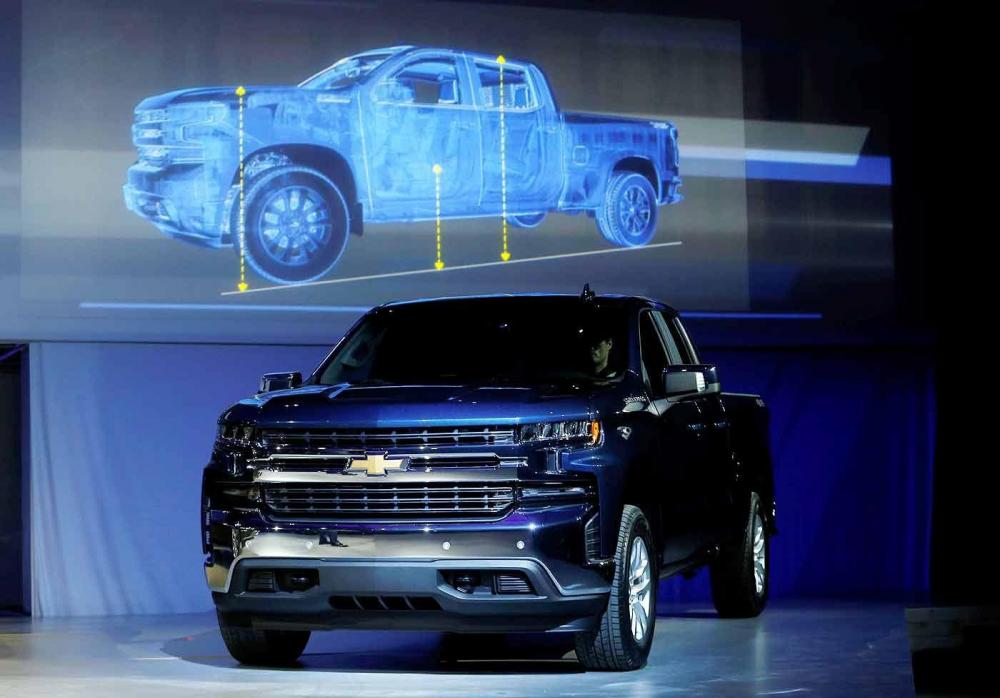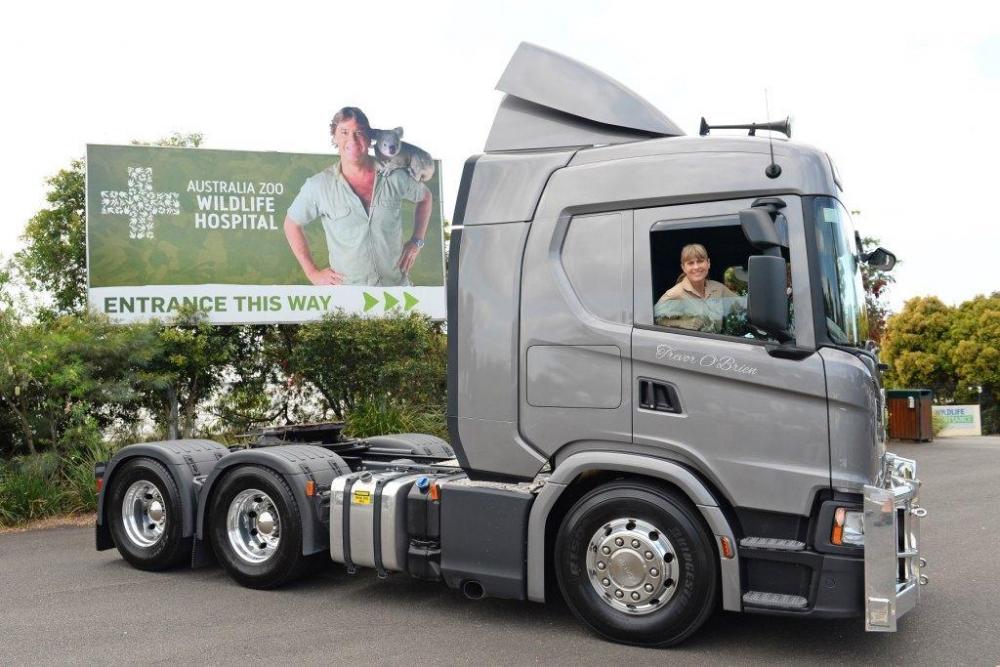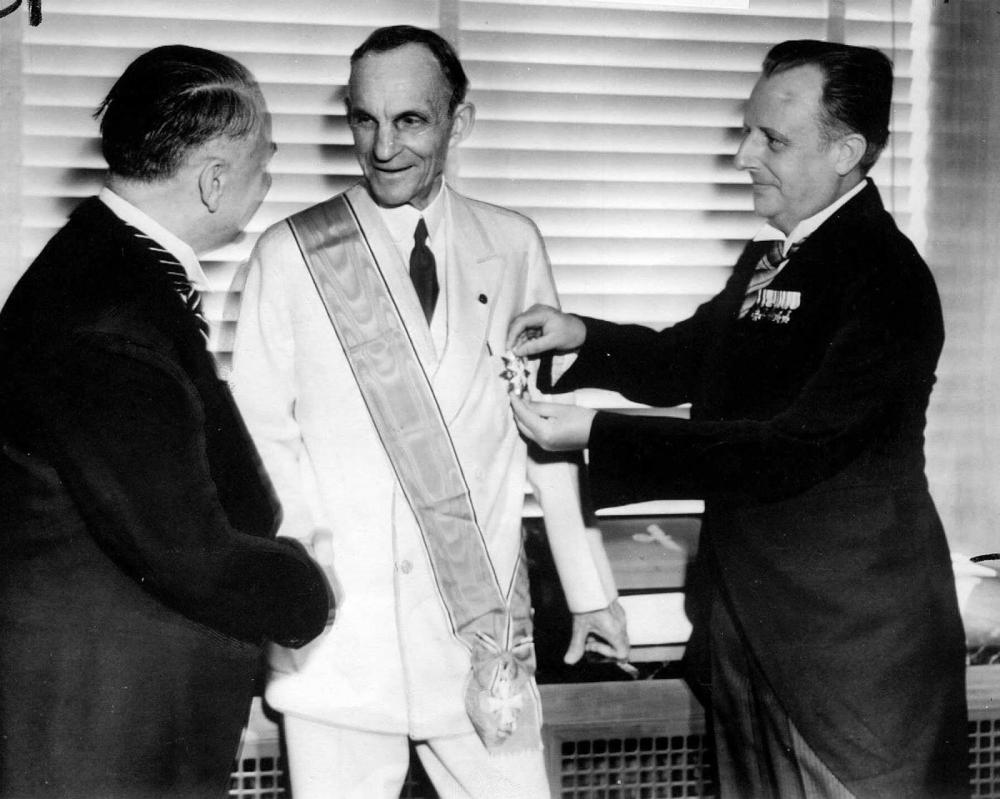
kscarbel2
Moderator-
Posts
18,550 -
Joined
-
Days Won
112
Content Type
Profiles
Forums
Gallery
Events
Blogs
BMT Wiki
Collections
Store
Everything posted by kscarbel2
-
Freightliner Australia Press Release / October 9, 2018 There has never been a better time to step up into a new Freightliner Argosy, packed with industry leading features. Take comfort in the biggest bunk on the road and the safety of our famous swing out staircase. If that’s not enough we now offer an impressive 4 year / 800,000km extended warranty. Built tough to suit the rugged Australian conditions and with one of the strongest support networks across the nation, the Freightliner Argosy delivers confidence for the long haul. .
-
http://airportjournals.com/ikes-aero-commander/ . .
-
Volvo Trucks Press Release / October 8, 2018 . . . .
-
-
International Trucks Press Release / October 4, 2018 .
-
Mack Trucks Press Release / October 11, 2018 Mack Trucks today revealed the new NH series, a groundbreaking all-new tractor that meets the needs of today's long-haul trucking customers and professional drivers through cutting-edge innovations in efficiency, productivity, safety and uptime. Available in several configurations, including an all-new, 70-inch sleeper, the Mack NH series defines the shape of trucks to come. An available 16-lite MP10 engine with ratings up to 750 horsepower features Mack's patented wave pistons, a unique design that helps burn fuel more efficiently. Fuel is delivered by a proven common rail fuel system with proprietary features that improve fuel delivery precision, cut weight and reduce noise. .
-
https://www.flyingmag.com/john-travolta-donates-his-boeing-707-to-australian-museum
-
Reuters / October 11, 2018 U.S. President Donald Trump warned on Thursday there was much more he could do that would hurt China’s economy further, showing no signs of backing off an escalating trade war with Beijing. “It’s had a big impact,” Trump said. “Their economy has gone down very substantially and I have a lot more to do if I want to do it. “I don’t want to do it, but they have to come to the table.” However, Trump said the Chinese want to negotiate but he does not believe they are ready and he told them so. He blamed previous U.S. presidents for allowing China to pursue unfair trade practices and said he had to tell Beijing, “It’s over.” “They lived too well for too long and, frankly, I guess they think the Americans are stupid people. Americans are not stupid people. We were led badly when it came to trade.”
-
A classic Connie should be restored and flying, a symbol of America's aviation history, not broken apart to be a cocktail lounge. .
-
It might be to late to order more Teflon-coated Craftsman coveralls now.
-
Sears’ lenders encourage liquidation rather than reorganization The Wall Street Journal / October 11, 2018 Sears Holdings Corp. met with its lenders Wednesday night to discuss emergency financing for the embattled retailer. The meeting ended without an agreement that would keep Sears operating as a going concern. A group of lenders, including Bank of America, Wells Fargo and Citigroup are pushing for the company to liquidate its assets under a chapter 7 bankruptcy filing, as opposed to reorganizing the business under chapter 11, A bankruptcy filing is expected by Monday when Sears must repay $134 million in loans. The situation is fluid…..Sears could still find another source of capital to prop it up through a restructuring. Sears hired advisory firm M-III Partners to prepare a bankruptcy filing. The company, which had 866 Sears and Kmart stores as of Aug. 4, has been unprofitable for seven straight years.
-
I never liked the B-24. It had a greater payload than the B-17, but proved to have more issues. An example of what can go wrong when a plane is hastily designed in wartime. .
-
Scania Group Press Release / October 11, 2018 Symbolic presentation heralds deal to supply dairy giant with completely fossil-free fleet. Like Scania, global dairy company Arla has been at the forefront of sustainable business initiatives in recent years, and the two have become willing partners in the transport and logistics industry’s efforts to combat climate change. Arla, which is a farmer-owned cooperative involving 11,000 farms in seven European countries, recently took a step further towards a fossil-free future with Scania’s symbolic handover of vehicle keys to signify a deal to provide 48 vehicles powered by rapeseed methyl-ester (RME), a form of biofuel that emits around two-thirds less carbon dioxide than diesel. Fossil free by 2020 The fossil-free fleet of Scania trucks will be supplied to Arla’s Swedish distribution units in Järfälla, Linköping, Jönköping, Gothenburg, Örebro, Ronneby and Visby in 2019 and 2020. Arla already runs vehicles on RME, hydrogenated vegetable oil (HVO) and Swedish-produced ethanol. Scania and Arla, have also worked with Lantmännen and ethanol producer SEKAB on a comprehensive concept, called Etha, to facilitate Swedish industry’s switch to fossil-free transport. “Arla has taken up the challenge of becoming fossil free in 2020, which is far more ambitious than the minimum required by the European Union timescale. Thanks to Scania’s ability to deliver vehicles that can run on alternative fuels, we are happy to say that we will get there,” says Berne Carlson, the vehicle manager at Arla. Fredrik Lundström, Fleet Sales Manager at Scania Sverige, adds: “Scania can provide vehicles and engines for all types of alternative fuels. While one type of fuel is not necessarily the solution for all, the conditions of each region, such as access and infrastructure, always influence what type of alternative fuel fits best. In this case, RME is the right fit and we’re delighted to help Arla in its efforts to become fossil free.” The advantages of RME fuel As a biofuel, RME, derived from the bright yellow flowering plant rapeseed, can cut carbon dioxide emissions by up to 66 percent. In January 2018, the Swedish fiscal authorities recognised the role the fuel can play in cutting emissions when it confirmed RME’s continuing tax exempt status. In turn, this is making RME more cost-competitive and having a positive effect on its availability. Since the authorities’ decision, sales of the biofuel have been performing strongly. .
-
The Dow fell 831 points yesterday. It wasn't a market crash, however it was a very, vary bad day. After the President commented on it, things went from bad to worse (I don't disagree with him, just laying out yesterday's timeline of events). -------------------------------------------------------------------------------------------- “The Fed is making a mistake," said Trump. "They’re so tight. I think Fed has gone crazy. It’s a correction that we’ve been waiting for, for a long time. But I really disagree with what the Fed is doing, OK?” Later, Trump said “The Fed is going loco and there is no reason for them to do it.”
-
Yes, Ford was heavily involved in the war effort......on both sides. Ford-Werke AG produced thousands of trucks and half-tracks for Hitler's military.
-
Yet another one who knows more about Mack V8s than.......Mack engineers. Some people just have to learn the hard way.
-
Was expecting better mpg numbers.
-
Chevy's 2019 Silverado with 4-cylinder engine rated at 21 mpg combined Michael Wayland, Automotive News / October 10, 2018 DETROIT -- The 2019 Chevrolet Silverado with a new four-cylinder engine will achieve an EPA-estimated 21 mpg combined, or 20 city/23 highway. The ratings, for rear-wheel-drive models, are not much better than the fuel economy of the redesigned pickup's 5.3-liter V-8 engine, which offers 19 mpg combined (17 city/23 highway), according to the EPA's website. The 2019 Silverado 4x4 models with the four-cylinder engine will achieve 20 mpg combined, or 19 city/22 highway. The fuel efficiency of the Silverado's 2.7-liter turbo engine, which is standard on midlevel LT and RST models, is in line with other entry-level truck engines from Ford Motor Co. (3.3-liter V-6) and Fiat Chrysler Automobiles (3.6-liter V-6 with a light hybrid system) that offer 22 mpg combined. Those engines, however, offer up to 25 mpg highway. The engine, according to GM, offers 14 percent more torque and 13 percent better city fuel economy. It is rated at 310 hp and 348 pound-feet of torque and is paired with an eight-speed automatic transmission. "It's fun to drive every day -- quick from the start, and pulling hard under acceleration," Tim Asoklis, chief engineer for the Silverado, said in a statement Wednesday. The four-cylinder engine, as reported, will offer maximum towing capacity of 7,200 pounds and a 2,280-pound maximum payload. The payload is up to 600 pounds better than comparable models from Ford and Ram, but the tow rating is up to 200 pounds less. The Silverado LT starts at $38,395 with the four-cylinder engine with a double cab and standard bed. The same RST model starts at $40,295. It's $2,400 more for each of the models with a short bed and crew cab, which makes up a majority of U.S. pickup sales. All pricing includes shipping. The 2019 Silverado will be offered in eight trims paired with six engine/transmission combinations. Models with V-8 engines are already on sale. The four-cylinder models are expected to begin arriving in dealers by the end of the year. It's unclear whether the redesigned GMC Sierra, the Silverado's sibling, will offer the same fuel economy. Some of the V-8 models in the Sierra offer slightly different fuel efficiency compared to the Silverado. .
-
Scania Group Press Release / October 10, 2018 Scania Australia helps crocodile researchers transport vital equipment. Every year since 2008, scientists and conservationists have been visiting the Steve Irwin Wildlife Reserve in Queensland, Australia, to study crocodiles. The largest and most successful crocodile research project in the world engages Australia Zoo, in partnership with the University of Queensland and Australia Zoo Wildlife Warriors. Scania Australia is assisting the researchers by supplying a new generation G 500 to transport vital equipment to the 135,000-hectare wildlife reserve. The truck will transport shipping containers filled with boats and traps for use during the annual crocodile research trip. Scania support lets zoo spend more on research The late Steve Irwin – who achieved worldwide fame with the Crocodile Hunter TV series – began crocodile research in the 1980s, and the reserve’s capture and study techniques remain the world’s best to this day. The Australia Zoo team captures the crocodiles, while the University of Queensland scientists carry out their research, take measurements, and attach trackers to the animals. “The truck will do a 5,500-kilometre round trip to the reserve and the money we would have used to rent a truck can now be used for further research into crocodiles and their conservation,” says Steve’s widow Terri Irwin, the owner and operator of Australia Zoo. The secrets of crocodile behaviour Every crocodile is fitted with an acoustic tag, which sends information to the researchers’ receivers for up to 10 years. For larger crocodiles, a GPS tracker is also fitted to help better track their movements, sending back data for around one year. These specialised tracking devices provide valuable information about the movements and behavioural patterns of adult estuarine crocodiles. After the researchers have fitted the appropriate device, they release the crocodile back into the river system, where its activity is closely monitored. So far the research has produced vital information on the crocodiles’ diet and on their movement patterns, including the fact that they can spend more than seven hours underwater. .
-
Sears hires advisers to file for bankruptcy The Wall Street Journal / October 9, 2018 Sears Holdings Corp. has hired M-III Partners LLC to prepare a bankruptcy filing that could come as soon as this week, as the cash-strapped company that once dominated American retailing faces a debt payment deadline. Employees at M-III Partners, a boutique advisory firm, have spent the past few weeks working on the potential filing. In recent days, M-III staff have been at the retailer’s headquarters in Hoffman Estates, Illinois. Sears continues to discuss other options and could still avert an in-court restructuring. Sears SHLD, -28.56% , which has been losing money for years, has $134 million in debt due on Monday. Edward Lampert, the hedge-fund manager who is Sears’s chairman, chief executive, largest shareholder and biggest creditor, could rescue the company, as he has done in the past by making the payment. But Lampert is pushing for a broader restructuring that would include shaving more than $1 billion from Sears’s $5.5 billion debt load, selling another $1.5 billion of real estate and divesting $1.75 billion of assets, including the Kenmore appliance brand, which he has offered $400 million to buy himself.
-
Volkswagen can't be trusted at all. It mysteriously remains under the control of the Porsche and Piech families, who owe all their wealth to Hitler. Ferry Porsche and Anton Piech were close friends of Hitler, and honorary members of the SS. Within Germany's deep state, these two clans remain incredibly powerful, and unlike BMW have never renounced their ties to the Third Reich. Of course Henry Ford was very close friends with Hitler as well. Hitler kept a photograph of Henry Ford on his office desk. Ford received Hitler's "Grand Cross of the German Eagle" in 1938. Ford is the only American mentioned favorably in Mein Kampf, although he is only mentioned twice:[62] Adolf Hitler wrote, "only a single great man, Ford, [who], to [the Jews'] fury, still maintains full independence...[from] the controlling masters of the producers in a nation of one hundred and twenty millions." Speaking in 1931 to a Detroit News reporter, Hitler said he regarded Ford as his "inspiration", explaining his reason for keeping Ford's life-size portrait next to his desk. https://en.wikipedia.org/wiki/Henry_Ford .
-
Or you could purchase them separately........ Plunger 79-VA7962 Spring 79-SP400608
-
Electric Axle for Trucks Saves Up to 15% in Fuel
kscarbel2 replied to kscarbel2's topic in Trucking News
Hyliion axle breathes new life into hybrids Jim Park, Today’s Trucking / October 9, 2018 TORONTO, Ontario — Hybrid is no longer a four-letter word. It may still leave a sour taste in the mouths of those who invested heavily in the hybrid concept a decade or so ago, but Hyliion’s 6-by-4 Hybrid Electric (6x4HE) propulsion system will put money in fleets’ pockets without the help of tenuous government subsidies. Come to think of it, Hyliion might even sweeten the industry’s feelings on 6×2 axles. The system, developed by Hyliion, formerly based in Pittsburg, Pa., but now in splendid new digs in Austin, Texas, is “simply” an electric drive axle added to a typical 6×2 tractor. It’s not designed to assuage the traction concerns sometimes associated with 6x2s, but rather to supplement the existing diesel powertrain by kicking in a little extra thrust to ease the burden on the diesel. The beauty of the system is that the energy used to help drive the truck is essentially free, generated by the momentum of the truck while rolling downhill or while braking. (It does assist with traction in its own way. The system usually engages when the truck launches, thus providing additional driving force from the rear axle.) The Hyliion system is made up of: an in-cab display that shows the driver the charge and assist state of the motor/generator as well as the state of charge and current fuel consumption; the HUB, or Hyliion Universal Box, control unit; an optional cooling unit/APU; the battery box; and the hybrid electric rear drive axle, which adds up to 120 hp and 1,500 lb-ft of torque. It’s all neatly packaged to hang off the frame rails just ahead of the drive wheels and between the frame rails directly behind the cab. All together, it adds 800 pounds to the vehicle by the time you consider the axle swap-out. This system also qualifies for the 400-pound auxiliary power unit weight exemption, which lowers the impact of the weight to 400 pound where the APU weight allowance is provided. According to Thomas Healy, founder and CEO of Hyliion, the hybrid propulsion system can deliver up to 15% in fuel savings in the optimum operating environment, which is rolling hilly terrain. “The battery size, power density and chemistry, along with our electronic controller and battery management system, are optimized for short-duration, high-energy discharge and equally rapid charging over short distances,” Healy explained. “Obviously we do not want to add a lot of weight with a larger battery, so it’s designed for optimum performance on the rolling hills you find on Interstate highways in states like Pennsylvania, Virginia, West Virginia, etc.” The ROI varies based on the amount of time spent in the optimum terrain, the total number of miles per year, and the amount of time the APU is used. In most cases, with 120,000 miles and regular use of the APU, the ROI will be between 18 and 24 months when installed on a new truck, he said. And that’s without any government subsidies. “At this time our system is not included in the available green technology subsidies,” Healy explained. “That being said, we are actively working with a variety of groups and key partners to establish funding support for our system.” One of the recently added features is a GPS-based predictive cruise control system that reads the road ahead and plans for whatever charging or power assist cycle the terrain might present. There were a few moments on our test drive when I thought the system should have helped out a little, but Jennifer Moreci, the product manager at Hyliion who was riding with me, pointed out a larger hill in the distance, and said the system was conserving its charge for that push rather than use it on the smaller hill we were climbing at the time. It’s smart that way. The battery also can be used to power an electric HVAC system with a capacity of at least 10 hours of air conditioning and normal hotel loads. Healy said the APU feature saves an additional 12% in fuel consumption compared to idling for climate control. Driving the 6x4HE All the electronic wizardry that makes this system so effective is completely invisible to the driver. There’s no need to change settings or switch the system on or off, so it doesn’t distract from the driving task. The one exception is switching on the APU function. The driver display, which Hyliion calls OPE for On-dash Portal Experience, has a selector for the desired APU run time of one, four, or 10 hours. If 10 hours is selected, the system will preference energy storage rather than driving assist in order to build the charge for the pending 10-hour run time. Moreci said the system charges remarkably fast and will completely recharge for another 10-hour run on less than an hour of driving time, which she said can be accomplished under the Personal Conveyance exemption in hours of service if the driver is on a 34-hour reset. The best way to describe the feel of the system when it’s in assist mode is the truck simply feels lighter. You don’t feel the typical load on the engine because the electric drive axle is helping with the thrust effort. This is more noticeable at low speeds, such as while maneuvering around town. The system switches to charge mode while braking, using the momentum of the truck to turn the generator/motor. The increased load on the system from charging feels something close to the first position on an engine brake. On the highway, it’s not noticeable at all, except for the Charge/Assist alert and the fuel mileage display on the OPE. Anytime the engine brake is engaged, the system will charge, and while coasting I could initiate some charging by just resting my foot on the brake pedal. We tested the system on an elevated expressway in Austin, which is otherwise pretty flat. The trailer was loaded to 45,000 pounds and the GVW was 77,000. At times with the assist it felt more like 47,000 pounds. According to OPE, at times when the assist function was active we were getting anywhere from 11 and 12 mpg up to 15 mpg. The system is not designed to provide a quicker launch or faster uphill climbs. It just adds thrust to the rear axle, the electric axle, to take some of the load off the engine, and thus cut fuel consumption. Hyliion’s hybrid electric propulsion system is the only one of its kind on the market right now. Despite all the activity on the battery-electric vehicle front, Healy believes a BEV for the long-haul segment is still at least a decade away. “Until we overcome the obstacles associated with battery capacity and charging infrastructure for long-haul trucks, hybrids can be the path forward, where we can get the fuel savings benefits associated with electric vehicles without having to change the total energy infrastructure,” he said. “Hybridization can be an immediate solution.” With a few hours driving experience under my belt, I have seen this technology work and I think it is an immediate solution.
BigMackTrucks.com
BigMackTrucks.com is a support forum for antique, classic and modern Mack Trucks! The forum is owned and maintained by Watt's Truck Center, Inc. an independent, full service Mack dealer. The forums are not affiliated with Mack Trucks, Inc.
Our Vendors and Advertisers
Thank you for your support!

